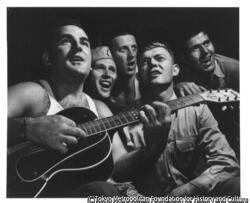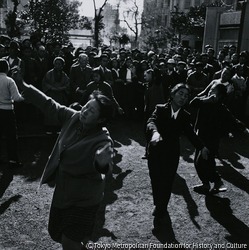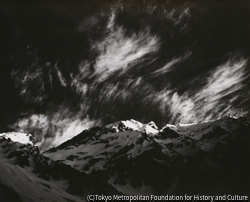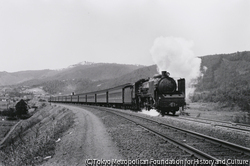
- Collection of
- Tokyo Photographic Art Museum
- Series title
- Ginza
- Title
- *
- Original title
- *
- Artist Name
- FUKUDA Katsuji
- Material / Technique
- Gelatine silver print
- Accession number
- 10013108
- Tokyo Photographic Art Museum “Search the Collection”
- https://collection.topmuseum.jp/Publish/detailPage/36946
About the creator
福田勝治 / FUKUDA Katsuji
from Art Platform Japan: https://artplatform.go.jp/resources/collections/artists/A2396
- Date of birth
- 1899-01-17
- Birth place
- Yamaguchi Prefecture
- Date of death
- 1991-12-26
- Medium
- Photography
- Gender
- male
- Update date
- 2023-02-13
Identifiers
- APJ ID
- A2396
- VIAF ID
- 31104627
- AKL ID
- 40426895
- NDL ID
- 00013793
- Wikidata ID
- Q6353435
Other items of Tokyo Photographic Art Museum (36008)

Two Objects inside the Washroom of My Studio #2
LEE, Ka-Sing
Tokyo Photographic Art Museum

AC # 11
SATO Tokihiro
Tokyo Photographic Art Museum

PHENAKISTISCOPES Disc of Phenakistiscope
Photographer unknown
Tokyo Photographic Art Museum
![作品画像:外宮 東宝殿[左] 西宝殿[右]](https://museumcollection.tokyo/wp-content/uploads/2023/12/42174.jpg)
The 61st Shikinen Sengu of the Ise Jingu, 2020 Geku, The inner west treasury [left], the inner east treasury [right].
ISHIMOTO Yasuhiro
Tokyo Photographic Art Museum

EARLY WORK *
SMITH, W. Eugene
Tokyo Photographic Art Museum

Sukiyabashi Park
KIMURA Ihee
Tokyo Photographic Art Museum

New Year's Visit to a Shrine, Kamakura
TSUCHIDA Hiromi
Tokyo Photographic Art Museum

Hara Museum, Shinagawa Ward
KUWABARA Kineo
Tokyo Photographic Art Museum

PITTSBURGH *
SMITH, W. Eugene
Tokyo Photographic Art Museum

Lantern Slides Lantern slides with wooden frame
Photographer unknown
Tokyo Photographic Art Museum

The Snow Line Peak at down
FUNAKOSHI Yoshibumi
Tokyo Photographic Art Museum

Nude
MATSUSHIMA Susumu
Tokyo Photographic Art Museum

Cat
OKAMOTO Miwako
Tokyo Photographic Art Museum

The Bikeriders Rider's Meeting, Elkhorn, Wisconsin
LYON, Danny
Tokyo Photographic Art Museum

untitled
KURIGAMI Kazumi
Tokyo Photographic Art Museum

The Spell of Steam—Japanese Locomotives C53 4: Tokaido Line Express 10 Bound for Tokyo, between Kyoto and Yamashina
NISHIO Katsusaburo
Tokyo Photographic Art Museum

